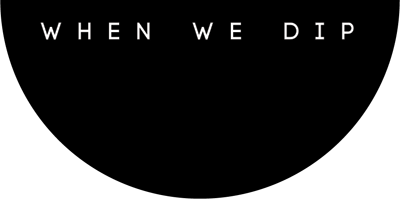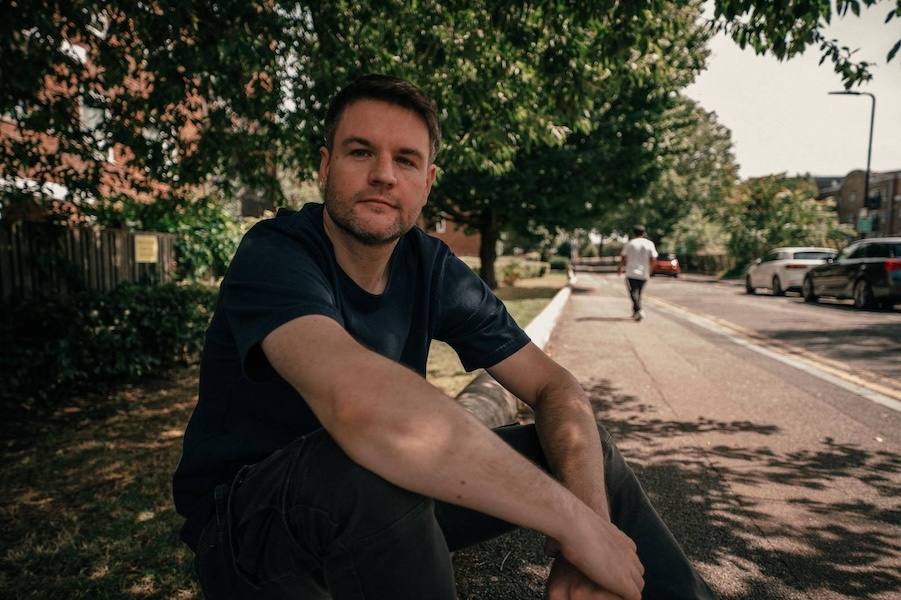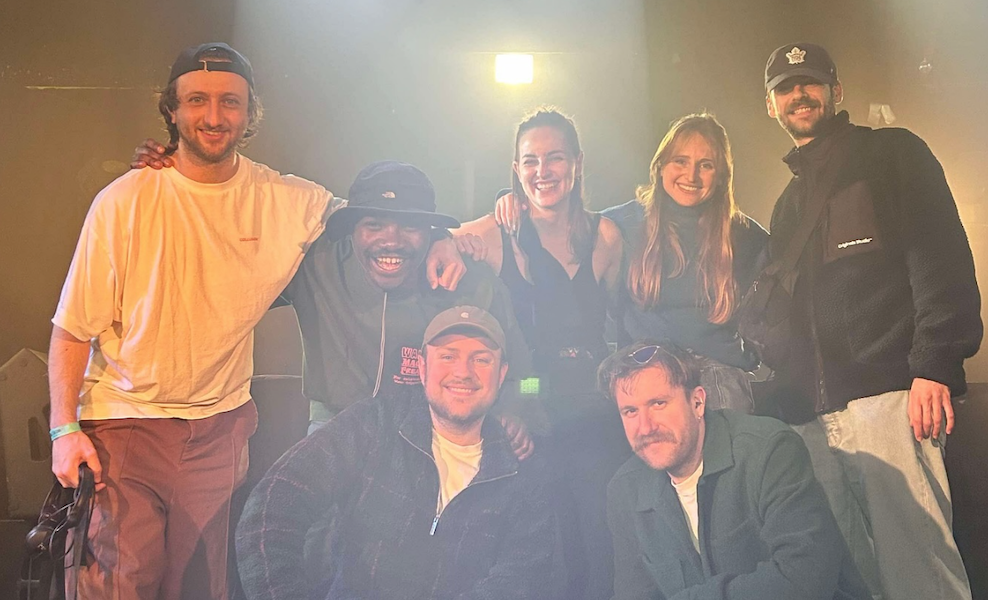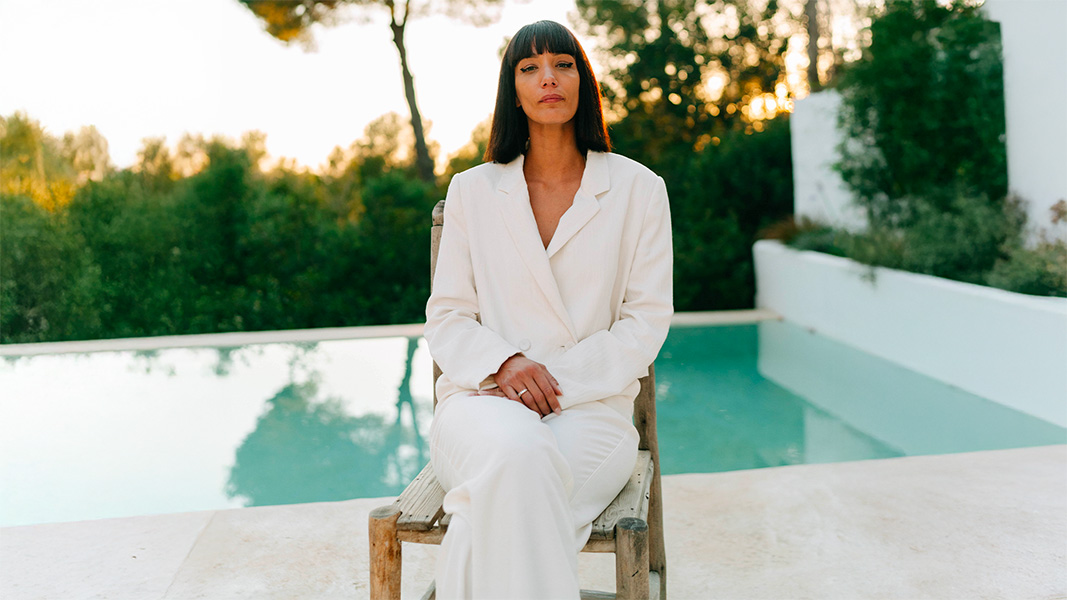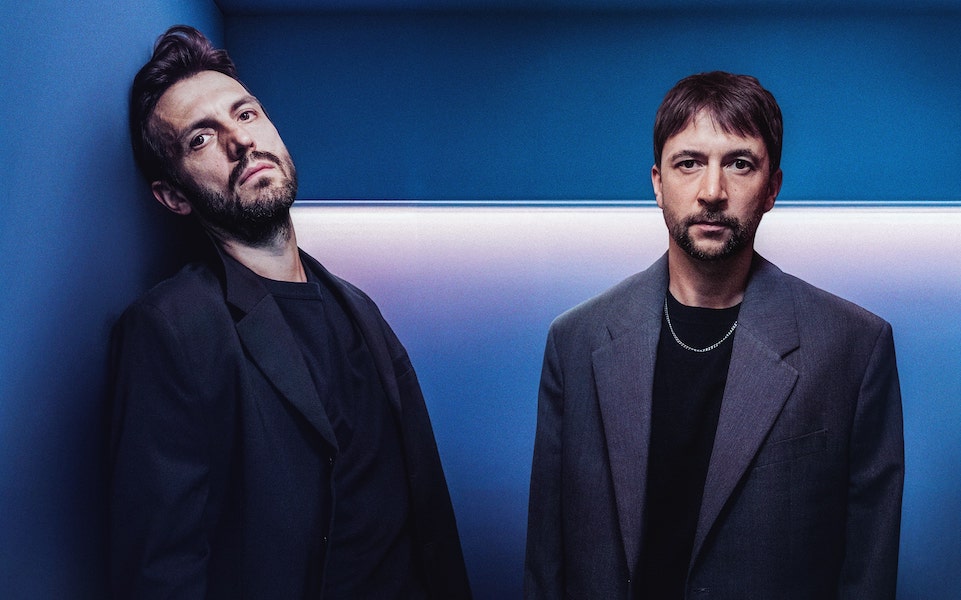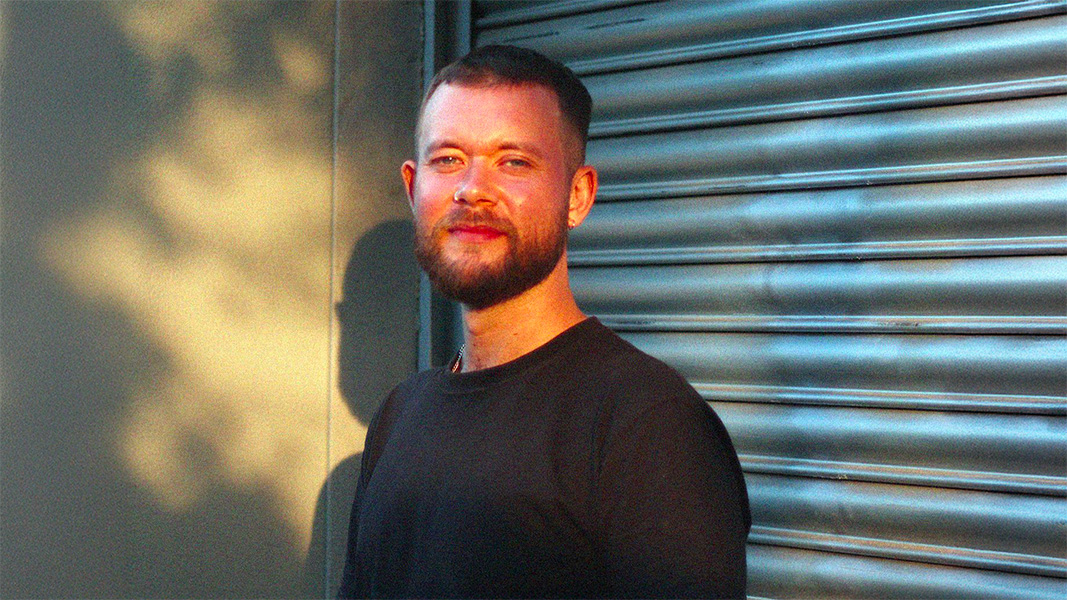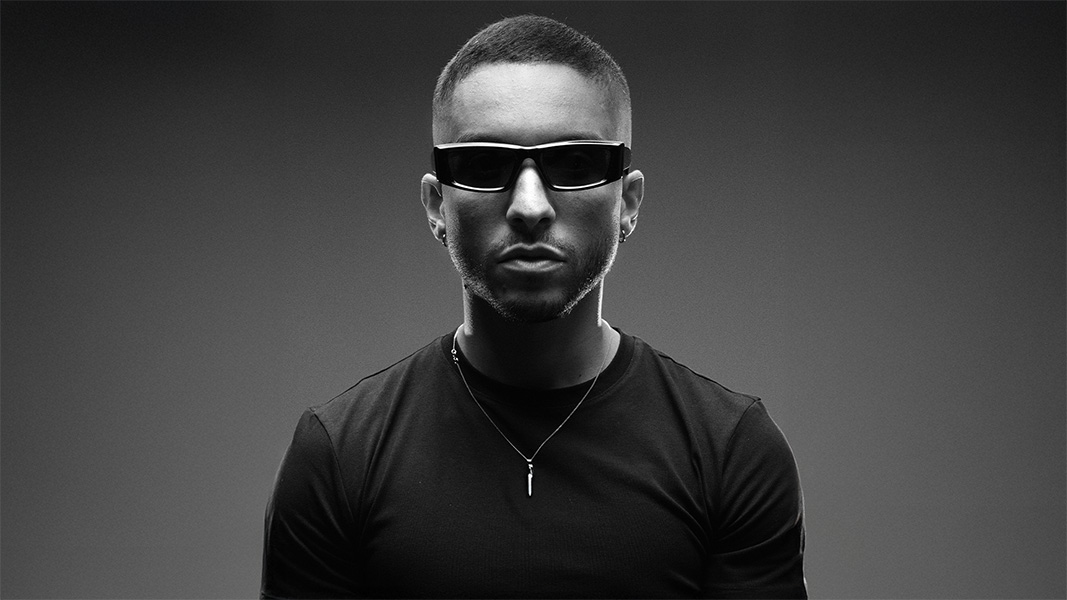In this interview we got the chance to spend some time with veteran artist Grum. He delves into the evolution of his career and sound. Reflecting on his journey from remixing icons to embracing deeper sounds, he highlights the influence of synthesizers and 80s aesthetics. After a year-long hiatus to rediscover his passion, Grum returns with a new label, Being, and a “Laptop Free” live act, emphasizing a more tactile and authentic music-making process. It was a pleasure to pick his brains and such a wide variety of subject…read on!
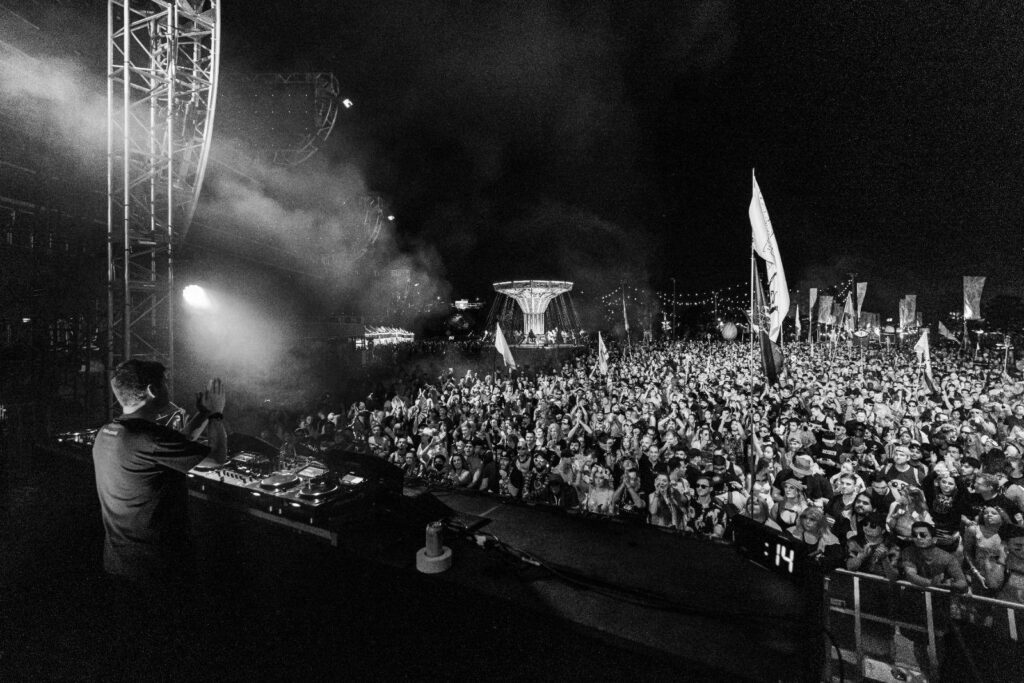
WWD: You have been around for a minute now, having worked on music in a few different styles. You’ve navigated through various musical terrains over the years, from the early Blog-Electro days and Italo, remixing icons like Lady Gaga and Goldfrapp to diving into deeper Progressive sounds. Looking back on your expansive career, what elements from your musical history have shaped you as an artist? are there any influences that have stuck with you since day 1?
I think my style has always been characterised by a love of strong, euphoric synthesiser sounds and this has been evident throughout my musical output. I also usually like to let the strength of the melody or hook carry it along instead of more rhythmic stuff. The Human League and Martin Rushent have always been major influences – that raw 80’s drum machine and synthesizer sound never gets old to me.
WWD: You took a year out, what was the driving force behind stepping back like that?
There had been a growing feeling of bemusement with electronic music in general, and it really has become something quite different from what I fell in love with 20 years ago. Rather than play the social media game, I decided to take some time out to see where I fitted in now, surround myself with artists and sounds that really inspired me, and most importantly make it all fun again. In the end I felt I had to go back to basics, and do something that was real, pure and honest. I found this by getting away from the computer screen and moving to a fully hardware setup, and honestly I’ve never enjoyed making music as much as I am now.
WWD: How did you fill you time? Pick up any new hobbies?
Not really, to be honest I had some really intense periods of studio work. I spent a good bit of time learning my new equipment inside out – even reading the manuals front to back, which is tedious but worthwhile!
WWD: So you are now back, a new label, a new sound and a new live act, reinvention seems to be the key to your longevity. Is this process something you always look to do? Something you find important?
I think to have a career with longevity, reinvention is important and has to be embraced. I felt like now was the right time to change things up. I also think with the new generation of producers breaking down the barriers of genre norms, there’s a great opportunity to be more creative at the moment and I have definitely been inspired by that.
WWD: This release is particularly special as it heralds the debut of your label, Being. What inspired you to establish your own label, and how does it reflect your vision for artistic freedom?
Being was really setup as something separate from Deep State for me to put out my new music on, without any preconceptions as to what that might be. The idea was to release music as and when I want, with less stress and more output. Better for me, and more music for my fans.
WWD: You recently spoke about your new “Laptop Free” live act, how did that come about? Can you tell us a little bit about how you work in the studio nowadays?
The idea really came after creating music with the computer-free studio setup – I realised that I could actually translate it all into a live show. In the past, the idea of running it all via a laptop never appealed to me that much, but using a hardware sequencer/sampler to run and control other bits of equipment really clicked for me as a tactile experience and performance, and felt like something unique relative to the genres I work in.
WWD: How do you plan to translate the intricate details of your studio work to the stage?
The live setup is based around a hardware sampler/sequencer and a couple of synthesizers. The sequencer runs the drums live and sends midi to the synthesizers, and I can control parameters of everything live. I can also remix the structure of each track as I go, so it’s unlikely that any two live performances will be the same. The main sounds from my music were made across all different bits of studio gear, so I’ve recreated these on the specific synths in the live setup. A lot of my newer music is based around big, bold hooks and ideas, and this works well in this regard.
WWD: Do you think this new way of making music, a new process that’s quite a bit different to the way you used to make music has contributed to the kind of music you want to make going forward?
Yes definitely. In terms of writing, I really feel a lot more creative when not dealing with a software DAW. I think it tends to draw you into fixating on production or mix, when in reality people mostly just hear the music itself. Having the best or loudest mix-down has never been something that appealed to me hugely. The new tracks are a bit more raw, rough and ready, but I think that makes them a lot more fun and unique when there is so much perfectly produced but uninteresting dance music out there.
WWD: Across electronic music – production tricks can often overshadow the song idea itself, how do you ensure that musical composition remains the driving force behind your work Could you share your approach to crafting a composition that stands out?
For me it’s really just all about feeling, which I suppose is a hard thing to explain or teach. If I write something which I’m into, then come back to it a few days or weeks later and it still grabs me, then that’s something worth finishing. If I can then do a structure using minimal builds and effects and relying on the musicality of the song then I know it’s a goer. I don’t really tend to follow any set formula in this sense. But I think if you are relying mostly on tricks, unless used in a really memorable or gimmicky way the music is often pretty disposable.
WWD: We all live in a very mature electronic music scene nowadays, lots of genres that are very long in the tooth. How do you navigate the balance between sticking to a genre’s roots and embracing the excitement of new sounds?
I think there’s always room to innovate, but I reckon the future belongs to creativity beyond the bounds of genres – actually a bit of a return to how things were for a moment in time in the blog house days when I started out. If you want to make house, techno, breakbeat and trance and all in your own style, that’s exciting and should be celebrated.
WWD: The dance music scene is a spectrum that ranges from pop-oriented tracks to the deep underground. How do you view the current creative exchange between these two ends of the spectrum, do we see cross-over success any more or is it more nuanced or in a different form?
I think the idea of underground and commercial either doesn’t exist any more in a musical sense or has been completely upturned. It’s really more about branding and social media reach which defines success now. There is so much brilliant music out there from artists who get very little attention or opportunities because their look isn’t right on Instagram. I’m hoping to highlight more of this music on the recently relaunched Deep State Radio.
WWD: After years in the industry, how do you keep your sound evolving while staying true to the essence of Grum? Are there any particular experiences or artists that have shaped your recent musical direction?
I have always just gone with my gut and found a way to make it work. The most important thing for me is that it stays enjoyable and I don’t stagnate creatively. In my time away I discovered and rediscovered a lot of artists who are fully doing their own thing and who really inspire me, such as Bicep, Legowelt, Pablo Bozzi, Four Tet, Narciss, SWIM. Too many to mention – and I think the spirit of creativity is coming back.
WWD: What future projects are you most excited about? Are there any collaborations or big things coming up we should look out for?
My debut live tour will be kicking off this summer across North America, and we’re working UK/Europe dates too. I’m very much looking forward to it all. I also have plenty more music to come on Being.
WWD: Before we wrap up, any advice or words of wisdom for aspiring producers and musicians drawn to your style of electronic music?
The most important thing is just to be yourself, and I think this is being rewarded now more than ever. And put the hours in in the studio so that it all becomes second nature.
Buy or Stream ‘Grum – Floating Point’ Here
Follow Grum: Instagram / Facebook
